Work Update
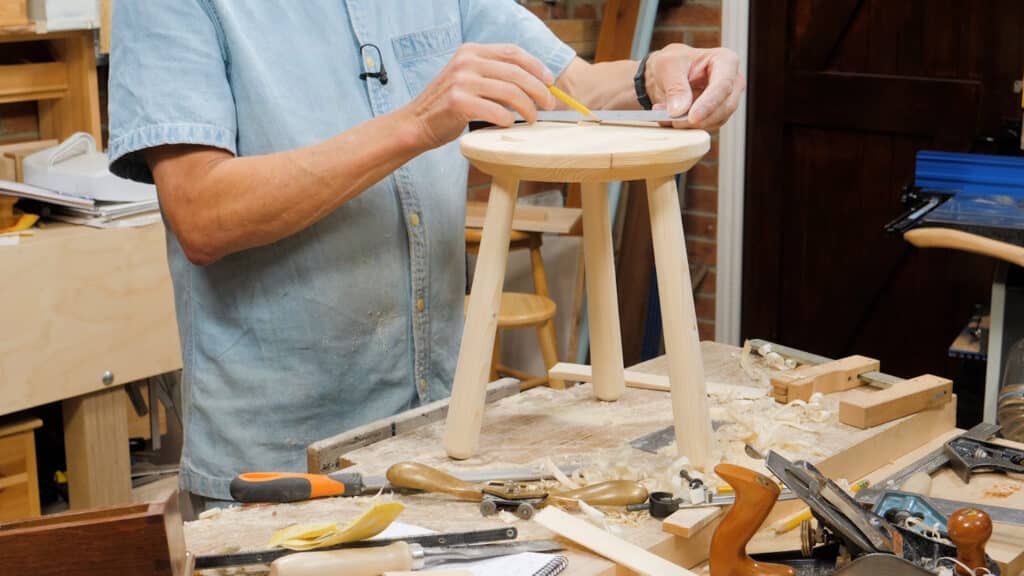
I’m a lucky man, really. And by lucky, I mean that the decisions I made were made possible by my early choosing of my vocational calling. That’s of key importance to remember. You see, luck plays nothing in the grand scheme of things. It wasn’t a gamble which is what lotteries and casinos all have in common. I will never win the lottery nor at a blackjack game. My fortunate life comes from simply working and working simply. I get to make, get to make my own pieces, get to design them, choose all of my wood, work for myself (which is a fallacy), pick my hours, choose where to work, what to do when, and so on. Reading this can give anyone the impression of a special self-employed freedom that actually doesn’t exist but I liken it to the illusion of some who work the closing few years of work for something called retirement. The main difference in my self-employment is that I have chosen my work-life, worked diligently at it full time and then, more importantly, how I work it. For the last 45 years, I have chosen to work a 60-hour week minimum. Sometimes it’s been for a few dollars an hour, rarely if ever a living wage. I have never worked the recognised full week of 35 hours, ever. . . My choice, sort of, but I was willing to work the longer hours to live the life I love and provide for my family when the boys were young enough to live still at home.
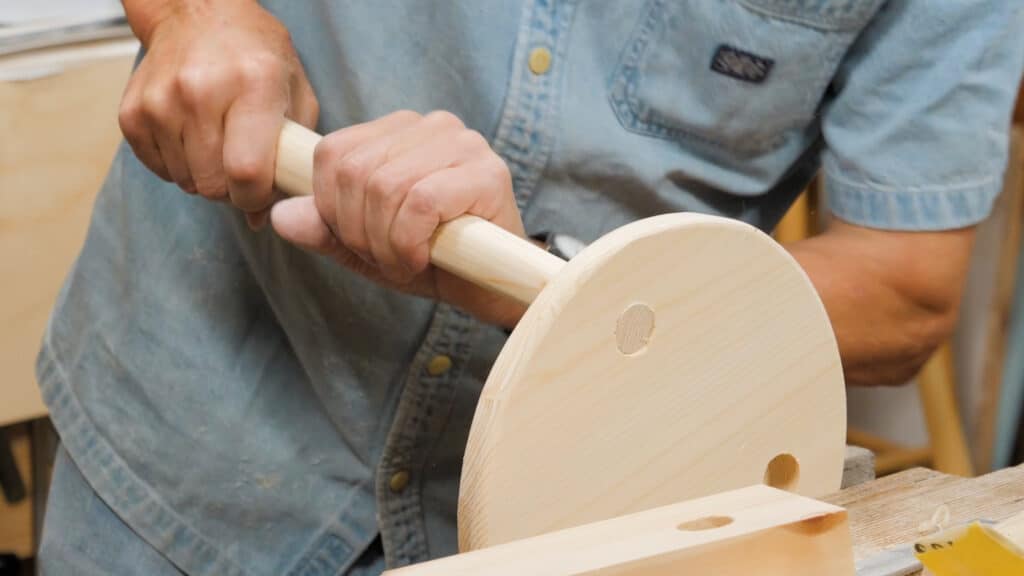
My children growing up, marrying and having their own families gave me a new freedom to pursue more of what I now do which came as a surprise I didn’t expect. And I am not really sure why I didn’t consider it but one thing I am truly thankful for is that I got to train them to work with wood to a really good depth. Joseph is key to a lot of what we do. Each project I make is an issue for discussion between him and me and then too the team ivloved in filming the whole thing. It makes my life easy to have these discussions ahead and to look for any potential issues. Making the stool above would have been one of their projects when they first started in the woodshop and what led them to building a whole slew of the projects you see in all of the projects on the blog and on woodworkingmasterclasses.com and of course, commonwoodworking.com too
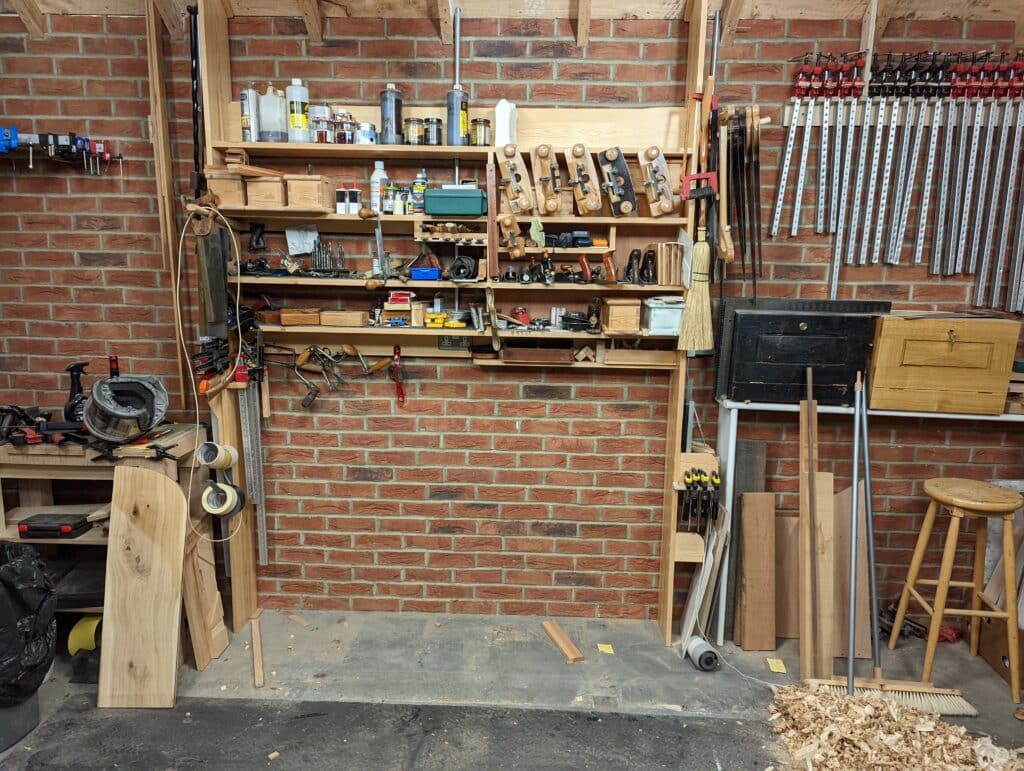
Today I started blitzing my workspace. I have been too busy to pick and put up as I should of late and maybe it is worth a time lapse because I plan some major changes that may not be noticeable when done. I have allowed materials, tools and waste to build up over a number of months and replication of many projects causes some space issues. If I were to show this in a photograph here people would say that looks like my shop and justify what is more possibly simple laziness or lack of discipline. In some cases, it can be like mine, simply a lack of time or space or both.
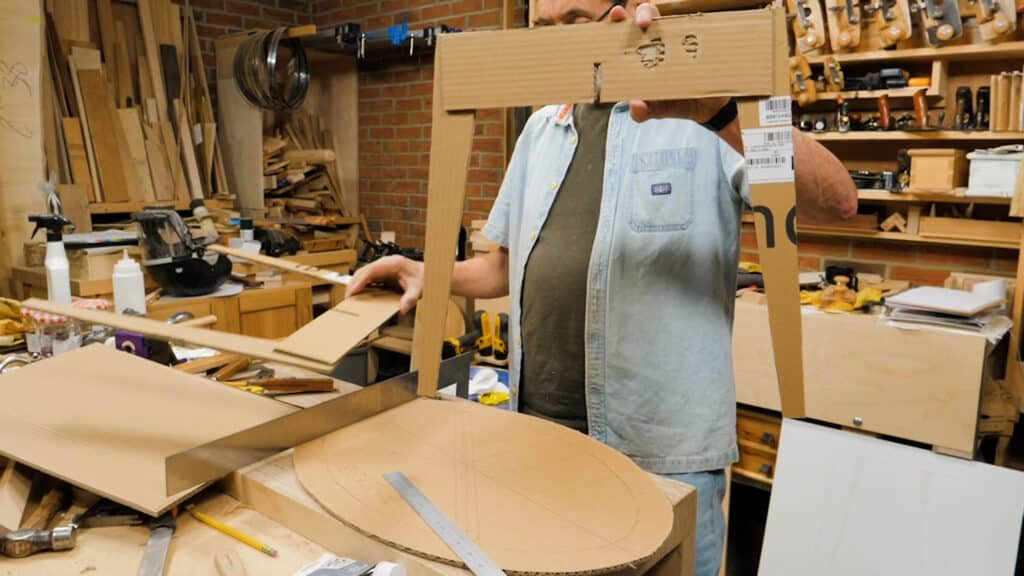
My designing and prototyping and making videos all the more understandable doubles or even triples the output necessary just to design and make a piece. Cardboard cutouts take time and space and a prototype means almost a full make, albeit in a lesser wood, like scraps of pallets or plywood offcuts. Nevertheless, it helps me to prepare for the filming as I see the filming as an equal craft to my own and thereby I try to ensure our videographers have access to the shots they want to get and this can often mean a repeat to cut in as a closer view or another angle for a different perspective.

Part of my work is to review the edits after the editing is done. I choose or record voiceovers to explain or bring clarity. Usually, I watch a video without sound first. This then helps me to interpret what happens without verbal instruction or input from sound and sentence. Then I allow sound and watch again. it’s not like watching myself. I feel like I am watching someone else. Today and yesterday I got to review two projects, the first episode of my elliptical tables, and then the three-legged stool I designed to be made by those new to hand tool woodworking which I made and filmed a few weeks ago as a free masterclasses.com video and probably YouTube too. I wanted something that came from a joiner’s workbench rather than a shaving horse with drawknives and wood under blockheaded shaving horses in a woodland coppice which 95% of woodworkers would have no access to. Getting it to the joiner’s workbench would well suit my audience. A QR (quick release) vise handles the whole but so too would a Black & Decker Workmate if that’s all you have.
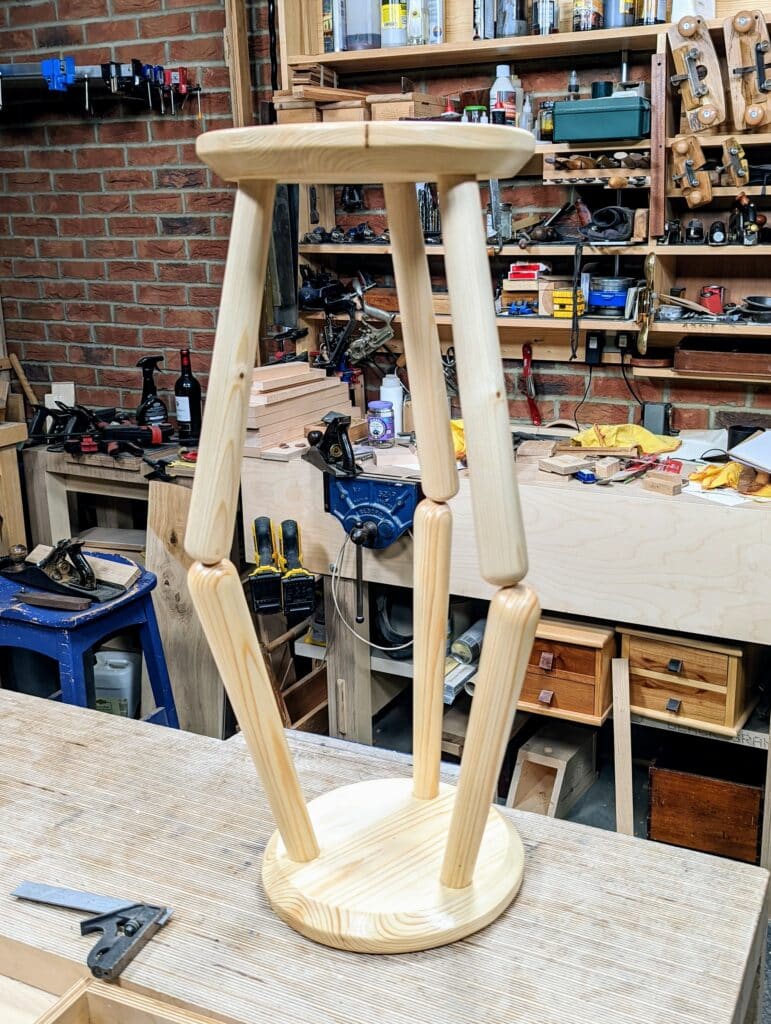


Hi Paul, interesting to see you use cardboard in your design process. As a person who has to see a design as in full scale and in three dimensions to make it click on my mind,it really makes sense. I never draw out a plan for a piece I think that’s my major fault, although I still get some good results. I will give the cardboard method a try next time. Thanks for your blogs, so inspiring
I think perhaps the greatest flaw in those who don’t do woodworking as a means to earn a living is not having a cohesive plan to work to. Laying out full size is even better than a scale drawing provided the project is not too big for that. I usually lay pieces of wood on my benchtop somehow just to get a feel for the sizes of components and then jot them down on a steno note pad. from there I create a cardboard place holder and tape or glue them together. When the first episode of the oval tables comes out on woodworkingmasterclasses.com it will be well worth a look at.
Thanks Paul, I understand your logic there and am lucky I don’t have to make pieces for a living, and the things I make are for me and my family. But I strive for better in making and accuracy , and if it goes wrong I try and rectify it with your guidance hopefully. The thing is the handmade aspect of woodworking that is what inspires me, don’t know where it comes from but I love it. It must be an inbuilt gene in your makeup that you must do it. Can remember asking for some woodworking tools as a Christmas present when I was about 7 years old , didn’t have an idea about what the tools did but clamped my vice on to the kitchen table and started butchering the wood. God knows what the neighbours thought. Since then I’ve become more of an understanding pupil. Funny how things turn out
I’m about to take cardboard so that I can lay out the storage at the front end of the glider trailer. There’s a lot to fit in; wing walker, trailer jack, a fishbox full of gear …. I really need to see it to make it work. Good to know I’m not the only one, though one of our boys is dyslexic and is able to visualise easily.
I’m retired and don’t need additional income. When I worked for someone else mostly I worked 60+ hours a week and even through vacations when I talked to customers early in the morning before my family was up. Now I choose what I work on, no illusion there. When I tried to make a living from woodworking I worked for pennies so that’s why I abandoned that trade. I do admit I had no training and learned everything on my own, there was no Paul Sellers in my day.
Mostly i do things for my home ( and for my wife) a new kitchen, renovation of a room or repairs to the grounds around the house. I’ve started vegetable gardening, ( nature) photography, bike riding, kayaking and attempting to play golf with friends. I suppose you could call that work but I don’t consider that as work. I guess I just don’t understand that someone else is controlling my life and making me do these things.
hi paul,
I hope you get a little buzz from the below:
today my 7yo asked to do some woodwork.
he made a small bowl in about 4 hours – “I want to get it done today, to put my orange in” [not often you see a 7yo stick at something for 4 hours].
I nearly fell over when, completely unprompted by me, he made the first rough cut by telling me how he was lining up the wood in the reflection of the saw blade! (I showed him how to do this based on your blog ‘smoke and mirrors’ a year ago).
then away he went with a gouge – needed help with this due to the size of the tools, but had the right idea, and was clearly safe.
next – he spokeshaved and rasped the outside of the bowl fully independently, to give it the bowl shape.
finally – he put on a single layer of shellac with a rag (then it ran out unfortunately).
it ‘s a pretty rough bowl – but great for a 7yo. and I feel part of it is yours.
many thanks,
paul
Wow! What a great success. You’re right, it did give me a buzz.
A silly question: why do we strive when we could lie in a hammock sipping delicious tea? In my quiet insomnia I have these kind of thoughts. What is worth doing? The men in my family usually live to 85 years. I am 45 so…I want every project I make to count for something to mean something to my family or my livelihood. That’s why I write on this blog and watch woodworking masterclasses. The handmade tools are the pinnacle of cool. Working wood couldn’t be more practical, either. I am build twelve lovely garden beds, for example.
My battery might be halfway used but I still got a lot of strive left in me.
C.A.D.
Cardboard Aided Design.
Cheers
Jerry
Hahaha love it! Not only will I start using this technique, but this is what I’ll be calling it in my head.
This must be the official definition ! From now on, I’ll be using it.
Paul would you say you think in words or pictures?. When you are planning how a project will be done are you simulating the components by images or by words by organising each step by a narrative? and when you’re writing are you thinking in words or by thinking about pictures when crafting a sentence?
Yes, pictures first followed by wording.
I would certainly start with a picture in mind.
Knowing what a table is, I can not imagine starting a table project by first looking in a dictionary for the definitions of: table, legs, table-top, apron, joinery, mortise, tenon and so on. (academic approach?)
Now, imagining a table with a known shape (e.g. oval) the corresponding word will of course come in mind simultaneously.
Then, of course one will have to define the proportions and dimensions in numbers.
The description as “oval” instead of “more or less round” implies using some geometry knowledge and is therefore not innocent.
(note the difference between oval, elliptical, ove, rectangle with a semi circle at each end, …).
The description is necessary to convey the concept to other people.